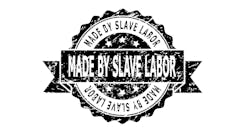Today’s literature on logistics and supplychain management is putting a relatively new (and long-overdue) focus on “reverse logistics.” One of the most widely accepted definitions of reverse logistics reads as follows: “Reverse logistics is all activity associated with a product/service after the point of sale, the ultimate goal being to optimize or make more efficient aftermarket activity, thus saving money and environmental resources.”
If diagrammed, that process would illustrate an open-ended lifecycle management concept. While the strengths and the importance of reverse logistics may be demonstrated and supported by both a definition and a diagram, failure to close that loop turns reverse logistics into a purely reactive portion of the lifecycle rather than the critical link in the lifecycle that provides continuous improvement.
Deming based his approach to improving quality on a closed-loop system, or a continuous cycle, so producers of finished goods must treat product lifecycle management as a closed loop or continuous process. The major difference between the two is that outcomes from a product lifecycle system are more likely to drive external loops for new products, rather than a continuously-evolving and never-ending improvement for a particular product.
There are three primary reasons for this vast difference. First, science is revealing new limits (or, some say, new dangers) from the use of traditional materials and processes. Secondly, technology is driving change at a more rapid rate, and, lastly, product lifecycles are shortening. We have, in fact, gone through three phases since the beginning of the Industrial Revolution, and there is nothing to confirm that the current phase is the last phase, or that we will not continue to rotate through cyclical or repetitive phases. The first phase demanded products that would “last forever” and therefore required long-term maintenance, which was replaced in the last half of the 20th century and into the earliest part of the 21st century with the throwaway or disposable model of products. Today, we seem to be moving towards a balance between the two. I suspect that balance between these phases will be the long-term result, but my crystal ball is no better than anyone else’s.
A Six-Step Approach
A more correct model to use for any organization that produces a finished good (something as simple as salt or sugar, or as complex as a ship, truck, or airplane) can be characterized by a simplified six-step process. This process can be repeated for each new product and as appropriate to each variation or modification of an existing product. Those steps consist of:
1. product concept;
2. product design;
3. product manufacturing (including facility maintenance and production machinery maintenance);
4. product delivery;
5. product use;
6. product disposal.
Remember that steps five and six in this model need to provide feedback to alter the system, but they must also feed the external loop for the next or a different product.
If one expands the concept of reverse logistics to make it part of a continuing spectrum of actions, then one can also look at a number of distinct areas such as ergonomics-maintenance considerations, distribution considerations, consumer considerations, and waste-stream considerations. These are neither meant to be allinclusive or exclusive, but they represent areas that can be demonstrated with reallife examples.
We will look only at the very narrow area of analytical instruments and will only talk about three such instruments. Neither the particular manufacturer nor the model of the instruments is important, but lessons learned are critical.
Case 1: Blood Analyzer
This was a classic new product introduction that pushed technology and manufacturing and greatly advanced clinical medicine, becoming a standard in hospital labs in a very short time. A great number of chemicals and diluents are needed to analyze the blood. The longer this machine was in service, the more unexplained explosions relating to waste systems in the laboratories were occurring.
In the end, it was discovered that the huge effluent flows from these analyzers were being run into standard laboratory drains which are part of the normal gray and black water system in any institution. It was a chemical reaction issue that required a change in the composition of the reagents being used in the machine. The lesson learned here is that you need to look at the entire lifecycle—including wastes generated and similar issues. The manufacturer created a state-of-the-art product, one that was inherently cost-effective for the user, but it presented a very real threat to the using environment
Case 2: Spectrophotometer Design
This device is a highly-effective, relatively compact but complex analyzer for destructive testing that uses a fuel and oxidizer mixture. Since this was a precise measuring device it was necessary to filter out solid particulate matter in the gas streams, as commercially-available gases are not quite as pure as those needed in this application. In essence this was a machine that needed to be serviced regularly and its filters changed. The machine’s design placed these filters at the back of the machine, and no form of access was included in the design of the machine.
This machine could not be handled by one person alone, so the machine’s design required that the service technician either get help from someone else or place himself at risk of physical injury each time the filters were changed. A properly-designed access panel would have alleviated this problem at extremely low cost. The secondary issue here is that the design meant that considerable time was required to gain access, and that access time is billable either to the owning organization or to the servicing organization.
Case 3: New Spectrophotometer Shipping Requirement
In this case, a considerably updated product was developed, put into production, and shipped. Almost none of these expensive and state-of-the-art analyzers worked out of the shipping container and all required considerable realignment of the optics bed. The issue was often pushed back on the field-service and installation personnel or design engineers.
In the end, after extensive testing with “g indicators” placed in all planes on shipped units, it was discovered that the machine as-designed was unable to survive the shocks of normal transportation. In this case, the cure was a redesign of the shipping container and the addition of a considerable amount of “horsehair” custom- formed internal packaging inserts.
Transportation and distribution cannot be ignored in development, particularly as the original packaging was neither low-quality nor inexpensive. It simply did not address the challenges of commercial transportation handling.
Other Problematic Products
In addition to the above examples, a number of current products represent specific identifiable disposal risks and/or present inherent shipping threats. Products and materials that fall into this category include:
• all fluorescent lights, especially the new CFLs;
• all mercury-containing devices such as thermostats;
• fire extinguishers using Halon 1301;
• wood treated with methyl-bromide, which meets the requirements of the International Standards for Phytosanitary Measures Guidelines for Regulating Wood Packaging Material in International Trade (ISPM 15);
• CCA treated lumber for outdoor use; and
• lithium-ion batteries.
This list is not all-inclusive. The issues relating to fluorescent lights were recognized decades ago and that recognition led to the development of a kind of mini-industry: the production of packaging specifically designed to allow the return of fluorescent light bulbs for proper recycling.
The challenges of reverse logistics are to identify more of those sorts of issues or problems in advance. Merely minimizing the end of life-cycle costs and impacts is not sufficient. Perhaps the product chain that presents the greatest opportunity for improved safety and cost-reduction is batteries in general, and, very specifically, lithium-ion batteries. Lithium-ion batteries have been identified as the most-likely cause for the destruction of more than one cargo aircraft and a number of other fires.
YouTube videos of “flaming laptops” made it around the world a few years ago. These incidents were attributed to bad lithium-ion batteries. In the past few years, a number of residential fires were traced back to children’s battery-powered toys. No one is suggesting that lithium-ion batteries cannot be used safely. You find them in some hybrid automobiles and they even power aircraft “black boxes.” But the concept of reverse logistics and life-cycle management requires that the issues relating to these devices be considered in the design of products, their distribution, their maintenance and their disposal.
The feedback and knowledge developed in the reverse logistics process has value far beyond minimization of postproduction costs and issues.
Robert D. Jaffin teaches for American Public University System and served as a department chair from June 2002 until November 2005. He was also selected to develop the Hazmat module for the Institute of International Transportation & Logistics’ Professional Certification Program in Transportation and Logistics Management.


